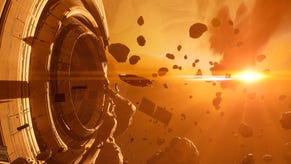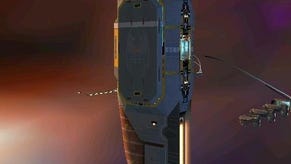Homeworld
Taking strategy into the third dimension.

A New Dimension
Homeworld is a refreshing new take on the real time strategy genre, abandoning the usual forest, ice, desert and volcanic worlds of most RTS games and instead setting the action in deep space.
Amazingly it works .. more or less. Controlling fast moving starships in a fully three dimensional space can be a little disorientating at times, but the interface and control system are fairly intuitive.
The game also features a full tutorial mission to get you started. You'll still need to refer to the manual for more advanced orders and details of all the different units, but the tutorial does a good job of covering all the basics and making you feel at home.
Once you've got the hang of things, it's time to start the game itself. You control a small fugitive fleet in search of your lost Homeworld, pursued by hostile aliens. Yes, this is "Battlestar Galactica : The Game" in all but name...
The storyline is pushed along nicely by a mix of in-game briefings during the missions, and pre-drawn black and white cutscenes between them. It's all very dramatic, and keeps the game moving at a fair pace.
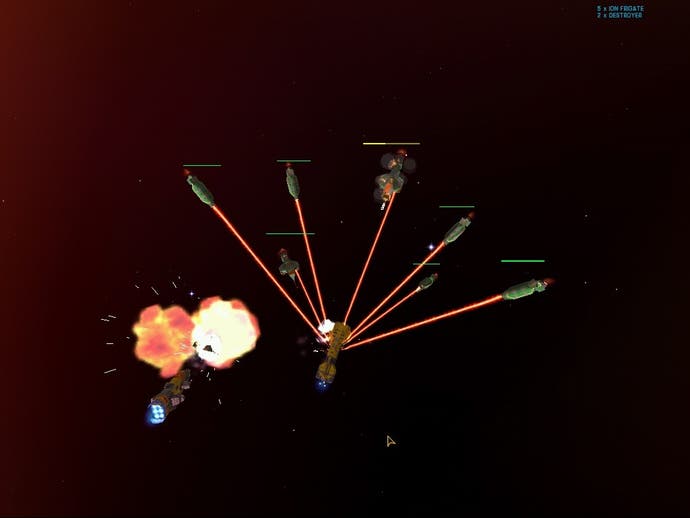
Mission : Impossible
The missions themselves can be a little slow though. Some of them take hours to complete, often with virtually nothing happening for a lot of that time.
The AI is mostly harmless, rarely counter-attacking even if you leave your mothership wide open. Usually you are left to gather resources, build up your fleet, and then launch an attack when you're ready.
But if the computer does decide to launch an offensive, you'll know all about it. When the AI brings a big enough fleet together in one place it can be a real challenge just to survive, let alone win.
Given that your fleet is carried over from one mission to the next and resources are often scarce, losing too many ships to an enemy attack can make the next mission even more difficult.
Your own ships suffer from AI problems as well, often sitting idle while the ship next to them is pulverized by an entire enemy fleet. I guess they're not big on self-preservation...
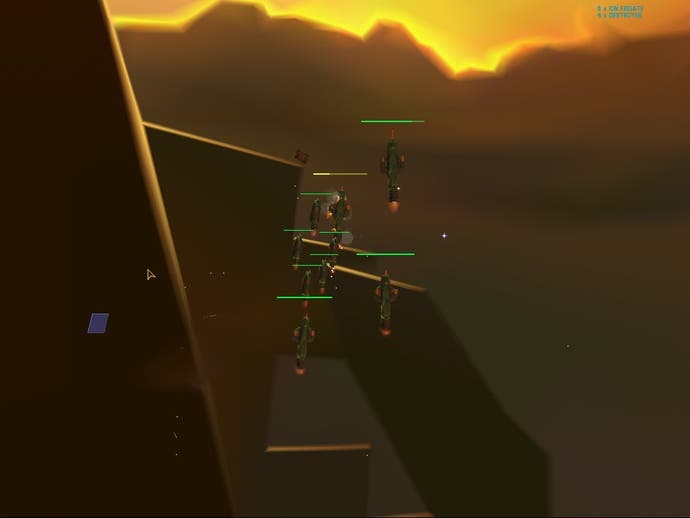
The Final Frontier
The only other problem is that space (by definition) is big and empty. There's no real terrain to control or defend, which leaves the tactical part of the game a little hollow at times.
Space does at least look interesting in Homeworld though, with dust clouds, asteroid belts, radioactive supernova remnants, and giant cosmic scrapyards. Even the backdrops are big, brash and colourful.
Explosions and weapons fire are also spectacular, and the ships look great as well. Best of all, the game can throw dozens of them around on screen effortlessly. It takes a really big battle before you start to see any slow down.
This does mean some trade-off though, and in Homeworld's case it's visual range. You can only see a relatively short distance, and ships outside that range are invisible to you until you switch to the sensors manager, which gives you a view of the entire area.
It helps keep the frame rates up, but looks a bit unnatural at first. Once you've played for a while though you will hardly notice it.
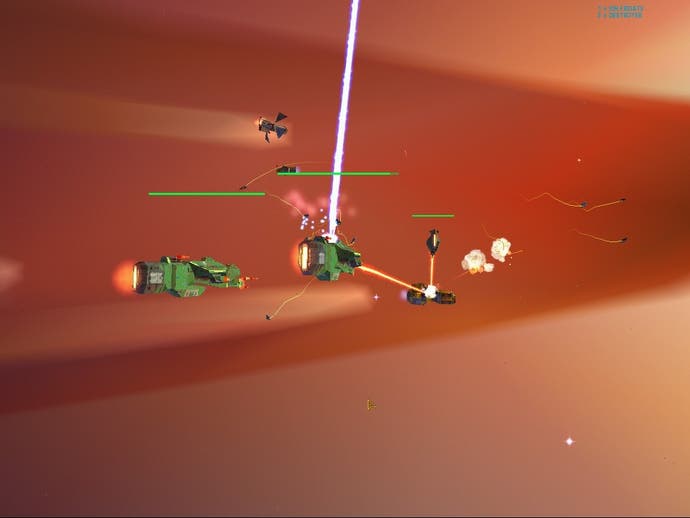
Fleet Manoeuvers
There is also a basic research element to the game, but this is fairly stunted in single player mode as you are only given one or two new technologies to research each mission.
It really takes off in multiplayer and skirmish modes though, where the entire research tree is available to you. The speed at which you gain advanced technologies, allowing you to produce new units like cloaked fighters and missile destroyers, can make the difference between winning and losing.
In fact, multiplayer is the game's real strongpoint. Finding other players is easy thanks to the built in chat rooms, and setting up or joining a game is just as simple.
Using a 33.6k modem, even chaotic four player games were remarkably smooth. There were occasional lock-ups when one of the players lagged out for a few seconds, but generally it worked well.
The skirmish mode (multiplayer against computer controlled opponents) also works well. In fact the AI performs much better than it does in the single player campaign for some reason, harrying and attacking your fleet constantly instead of just sitting back and waiting.
There are also a whole host of different options to fiddle with - victory conditions, resource levels, bounties, supplies... It all adds up to a lot of replay potential.
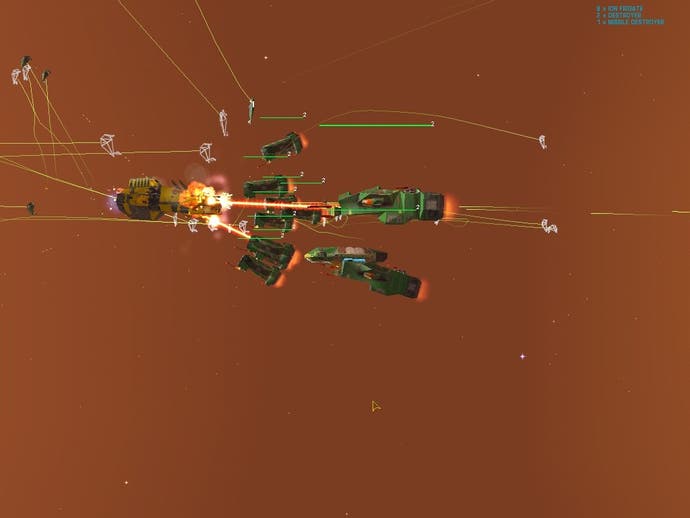
Conclusion
Despite being the first true spacefaring real time strategy game, Homeworld comes close to hitting the mark.
The visuals are beautiful, the soundtrack atmospheric, the single player campaign (mostly) engaging, and the multiplayer is excellent. It's only really let down by suspect AI and a few tedious missions. Release Date - available now
Eye Candy
Download The Demo
Don't take my word for it though, try before you buy with the Homeworld demo (63Mb).


